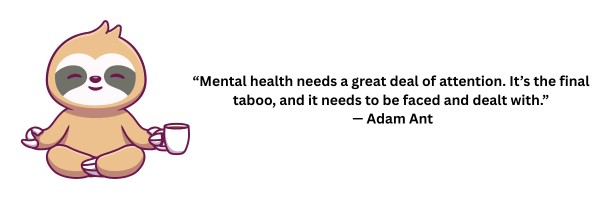When Art Speaks for the Community

“Can you lighten the skin tones?”
That’s what muralist Marissa Hernandez was asked after designing a mural full of rich, beautiful brown and Black skin.
Her response? A calm but firm “No.”
This week on Coffee Can’t Fix Everything, we’re talking mental health, identity, and why public art is public health, especially when it’s rooted in community.
Art Ain’t Just Art—It’s Mental Health Infrastructure
Let’s get one thing straight: representation in public spaces isn’t a luxury. It’s a protective factor.
When Marissa paints faceless portraits of people with Afro-textured hair, different body types, and melanin-rich skin, she's not just decorating a wall—she’s reflecting back humanity to people who rarely see themselves honored in public places.
And that visibility?
It’s healing.
It fights isolation.
It says you matter here.
It rewrites what’s “normal.”
From Murals to Mental Wellness: The Real-World Impact
Marissa’s process is rooted in collaboration with students, schools, and small businesses. She brings in kids, listens to their ideas, and sometimes even lets them help paint. The result? Young people see their culture, their creativity, and their value in permanent color on city walls.
And they’re not just passive viewers.
They’re co-creators of the message:
"You belong."
Let’s be real: When a kid says, "That one looks like my friend" or "That one looks like me", that's not about art. That’s about psychological safety and community affirmation.
Real Talk: What This Has to Do With You
Whether you’re in public health, education, or community organizing—you’re shaping environments. If those environments don’t reflect the full cultural spectrum of the people in them, that’s a health issue. Full stop.
Representation reduces stigma.
It fosters belonging.
It supports resilience.
We talk a lot about social determinants of health. Let’s start including public visibility and cultural affirmation in that conversation.
Take This to the Streets (Literally)
Here’s how to bring that Marissa Hernandez mindset to your work:
- Audit your space. Who’s on your posters, flyers, walls? If it’s all stock photos and corporate vibes, it’s time to switch it up.
- Center local voices. Collaborate with artists and creators from the community. Let them lead—not just “consult.”
- Support representation with real dollars. Stop asking BIPOC artists to work for “exposure.” Exposure doesn’t pay rent.
- Tell the full story. Make sure your messaging reflects people of all body types, genders, and cultures—not just a sanitized version of diversity.
Make It Make an Impact
Marissa said it best:
“I don’t think it’s fair to tell people of color they have to leave to succeed. I want to stay and be part of the difference.”
That’s the mindset we need in public health, in education, in our communities.
You don’t have to leave to be seen. You just need systems to stop erasing you.

🔥 Let’s Keep This Energy Going
👉 Support the podcast + platform:
👉 Share this newsletter with someone doing community work who needs this reminder.
👉 Reply to this email: How are you showing representation in your work or city?
Let’s talk. Let’s build. Let’s keep showing up with purpose.
— Mental Health Coffee Club
Want more bold stories at the intersection of culture and mental health? Subscribe and bring a friend. We’re just getting started.
